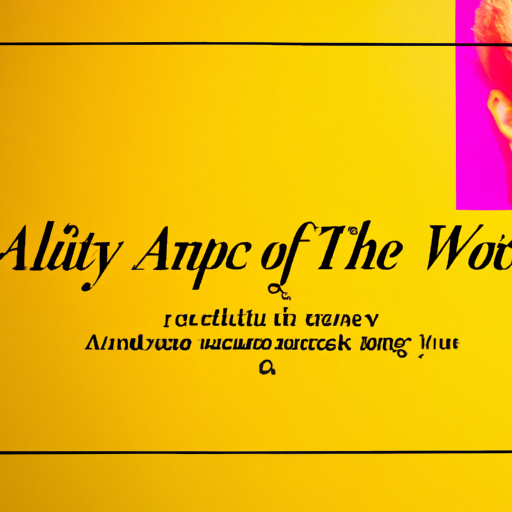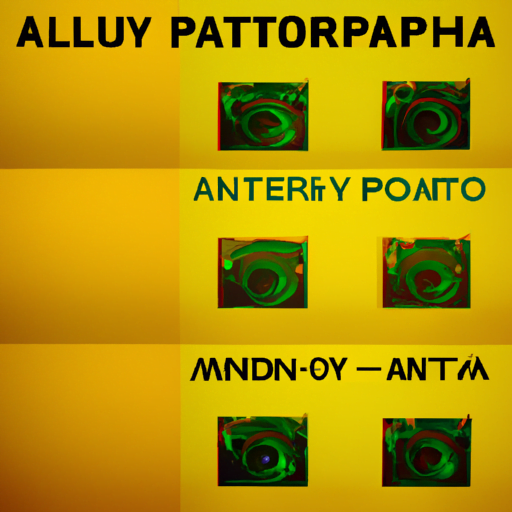
-
Table of Contents
- Typography in Music Album Artwork: Creating Visual Identity
- The Power of Typography
- 1. Font Selection
- 2. Letterforms and Styling
- 3. Layout and Hierarchy
- 4. Color and Texture
- Case Studies: Typography in Iconic Album Artwork
- 1. “The Dark Side of the Moon” by Pink Floyd
- 2. “London Calling” by The Clash
- 3. “Abbey Road” by The Beatles
- The Impact of Typography on Branding
- Conclusion
Typography in Music Album Artwork: Creating Visual Identity

Album artwork plays a crucial role in the music industry, serving as a visual representation of an artist’s music and brand. While the imagery and design elements of album covers are often the focus of attention, typography also plays a significant role in creating a visual identity for an album. In this article, we will explore the importance of typography in music album artwork and how it contributes to the overall aesthetic and branding of an artist.
The Power of Typography
Typography, the art and technique of arranging type, has the power to evoke emotions, convey messages, and create a distinct visual identity. When it comes to album artwork, typography can be used to capture the essence of the music, reflect the artist’s personality, and attract the attention of potential listeners. The right choice of fonts, letterforms, and layout can make a significant impact on how an album is perceived.
Let’s take a closer look at the various aspects of typography in music album artwork:
1. Font Selection
The choice of fonts is crucial in setting the tone and mood of an album. Different fonts have distinct personalities and evoke different emotions. For example, a bold and edgy font may be suitable for a rock album, while a delicate and elegant font may be more appropriate for a classical or jazz album.
It is essential for artists and designers to consider the genre, theme, and target audience of the music when selecting fonts. The font should align with the overall aesthetic and message of the album, creating a cohesive visual experience for the audience.
2. Letterforms and Styling
Letterforms refer to the individual characters that make up a font. The styling of these letterforms can greatly impact the visual appeal and legibility of the typography in album artwork. Artists and designers can choose from a wide range of letterforms, including serif, sans-serif, script, and display fonts.
Serif fonts, with their small decorative strokes at the end of each character, are often associated with tradition, elegance, and sophistication. Sans-serif fonts, on the other hand, have a clean and modern look, making them suitable for contemporary and minimalist album designs. Script fonts can add a touch of elegance and playfulness, while display fonts can be used to create a bold and eye-catching statement.
3. Layout and Hierarchy
The layout and hierarchy of typography in album artwork determine how the information is organized and presented. It helps guide the viewer’s eye and emphasizes the most important elements. A well-designed layout ensures that the typography is legible and visually appealing.
Artists and designers can experiment with different layouts, such as centered, left-aligned, or asymmetrical, to create a unique and engaging composition. They can also play with the size, weight, and color of the typography to establish a hierarchy and draw attention to specific elements.
4. Color and Texture
Color and texture can greatly enhance the impact of typography in album artwork. The choice of colors can evoke specific emotions and create a cohesive visual experience. For example, warm colors like red and orange can convey energy and passion, while cool colors like blue and green can evoke a sense of calmness and tranquility.
Texture, whether applied to the typography itself or the background, can add depth and visual interest to the album artwork. It can create a tactile feel and make the typography appear more dynamic and engaging.
Case Studies: Typography in Iconic Album Artwork
Let’s take a look at some iconic album artwork that showcases the power of typography:
1. “The Dark Side of the Moon” by Pink Floyd
The album cover for “The Dark Side of the Moon” is a perfect example of how typography can create a strong visual identity. The use of a simple, sans-serif font in a clean and minimalistic layout reflects the album’s progressive and experimental nature. The iconic prism design, combined with the bold typography, has become instantly recognizable and synonymous with Pink Floyd.
2. “London Calling” by The Clash
The album cover for “London Calling” is a striking example of how typography can convey a sense of rebellion and energy. The use of bold, distorted letterforms in a vibrant pink and green color scheme creates a visually dynamic composition. The typography, along with the torn paper effect, captures the punk spirit of The Clash and their iconic album.
3. “Abbey Road” by The Beatles
The album cover for “Abbey Road” is a classic example of how typography can be simple yet impactful. The use of a clean, sans-serif font in a single color creates a timeless and elegant design. The typography, along with the iconic zebra crossing, has become synonymous with The Beatles and their legendary album.
The Impact of Typography on Branding
Typography in music album artwork not only creates a visual identity for a specific album but also contributes to the overall branding of an artist. Consistency in typography across an artist’s discography can help establish a recognizable and cohesive brand image.
By using consistent fonts, letterforms, and layout styles, artists can create a visual language that extends beyond individual albums. This visual language becomes a part of the artist’s brand, making their music instantly recognizable and memorable.
Conclusion
Typography plays a vital role in creating visual identity in music album artwork. The choice of fonts, letterforms, layout, color, and texture can greatly impact the overall aesthetic and branding of an artist. By carefully considering these elements, artists and designers can create album covers that capture the essence of the music, reflect the artist’s personality, and attract the attention of potential listeners. Typography, when used effectively, has the power to make a lasting impression and contribute to the success of an album and an artist’s career.
